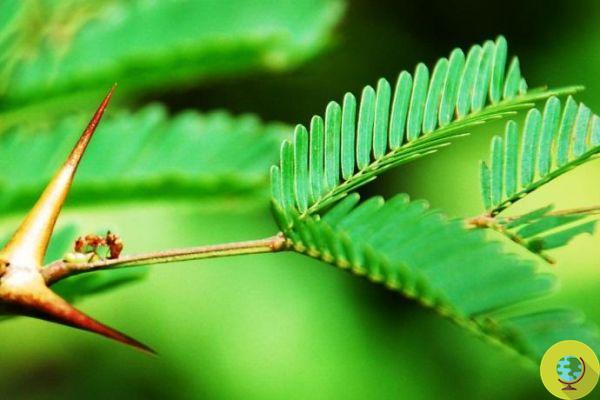
Plants are boring. They stand still, do photosynthesis while the animals have fun, move, chase each other and admire the world. False! Even if we tend to believe that this is the case, they have developed specific characteristics to become attractive to the eyes of the ants, manipulating them until they are defended.
He is about to end up run over, his mother saves him
Plants are boring. They stand still, do photosynthesis while the animals have fun, move, chase each other and admire the world. False! Although we tend to believe that this is the case, they have developed specific characteristics to become attractive to the eyes of the ants, manipulating them until they are defended.
A mutual exchange relationship for crafty plants, which offer nectar welcome to insects and empty corners in which to shelter but in return use ants to spread their seeds and as bodyguards.
A new study published in Pnas distorts the genetic history of 1700 species of ants and 10.000 plant genera. Researchers led by Field Museum researcher Matt Nelsen found that plants evolved around ants, developing ways to trick them into protecting them and spreading the seeds.
Scientists weren't sure how their evolutionary relationship began. It dates back to the time of the dinosaurs and it is not easy to understand from the fossils how these organisms interacted.
“There are very few fossil records of these structures in plants, they don't go far back in time, there are tons of ant fossils, but they generally don't show these behaviors. You don't necessarily see an ant preserved in amber carrying a seed ", explains Nelsen.
Then, to determine the early evolutionary history of plant-ant interactions, Nelsen and colleagues used large amounts of DNA data and ecological databases.
“In our study, we linked these behavioral and physical characteristics with family trees of ants and plants to determine when they started eating and living on plants and when they developed the ability to produce structures that exploit them,” explains Corrie Moreau. , co-author of the research.
The team mapped the history of ants' use of plants onto these family trees, a process called ancestral status rebuilding.
At that point he was able to determine when plants began to rely on ants for defense and seed distribution. Investigations revealed that these tiny beings have relied on plants longer than they have done with them.
“My main interest is in studying how interactions between organisms evolved and how these interactions changed their evolutionary history. When did ants start using plants and when did plants start making structures for the ants? " says Matt Nelsen.
According to scientists, some plants have evolutionary characteristics capable of attracting ants, in some world convincing them to defend them from attacks by other insects and even mammals, including hollow spines where they settle or extra nectar on leaves or stems.
Other plants use ants to spread their own seeds by corrupting them with rich food packages attached to them called elaiosomes. “The ant will collect the seed and take it away, eat the food and discard the seed - often in a nutrient-rich area where it will grow best,” the team explains.
The study is important because it provides a glimpse into how these interactions evolved.
READ also:
- How did flowering plants conquer the Earth?
- Fantastic ants: they use the sun and memory to move
Francesca Mancuso
Photo: Field Museum, Corrie Moreau


























